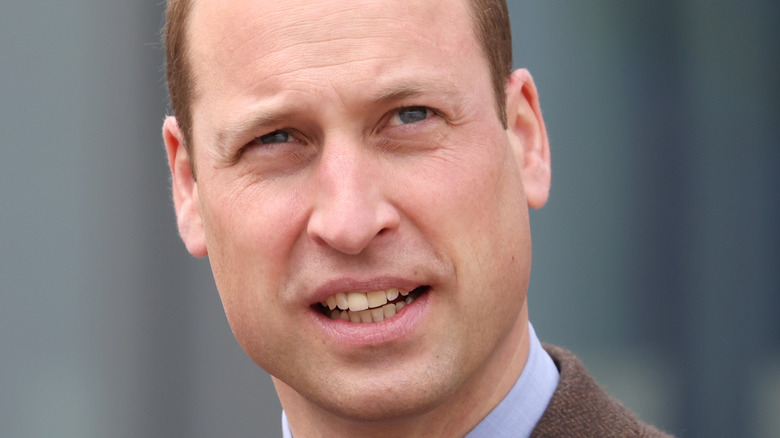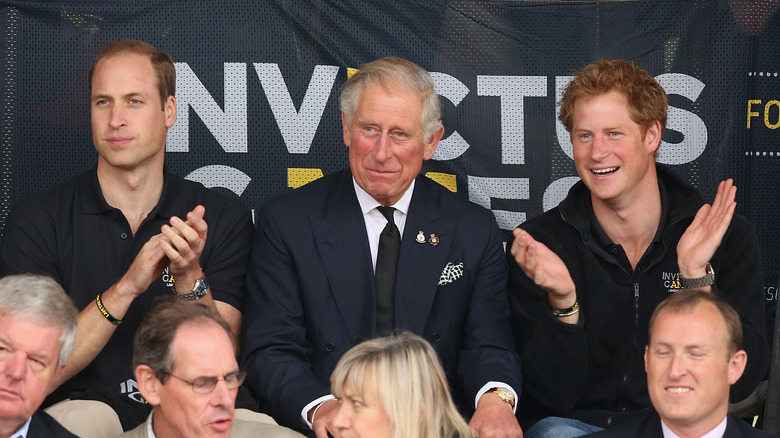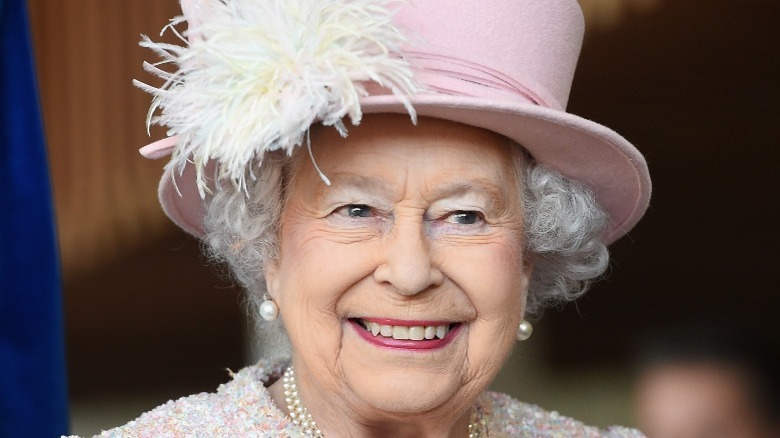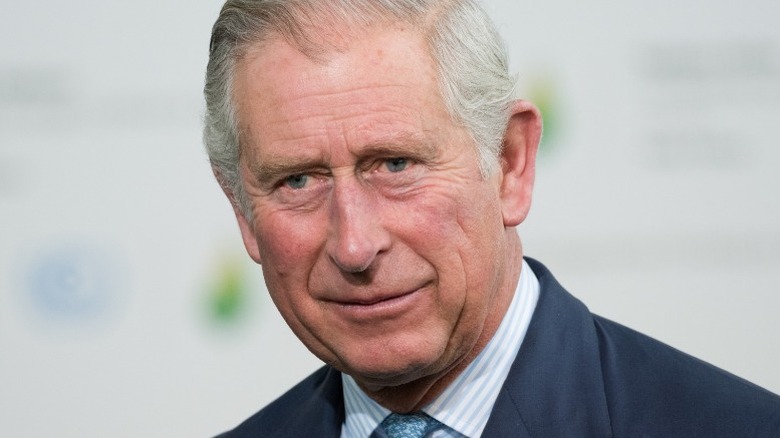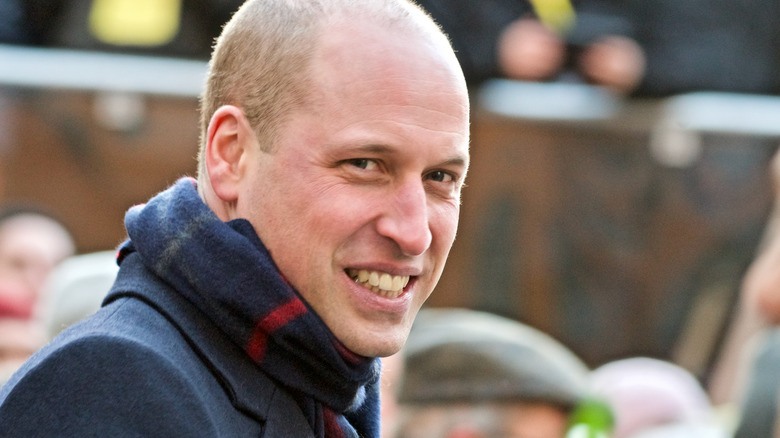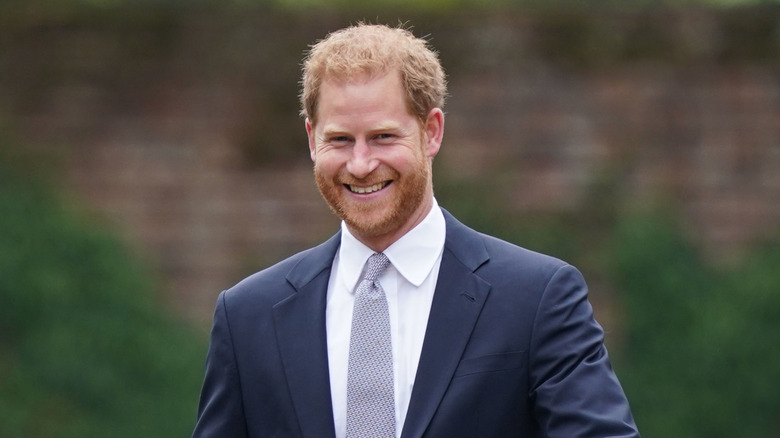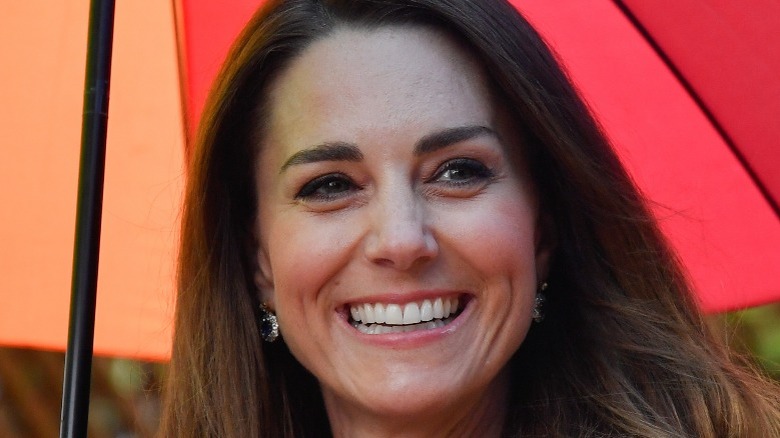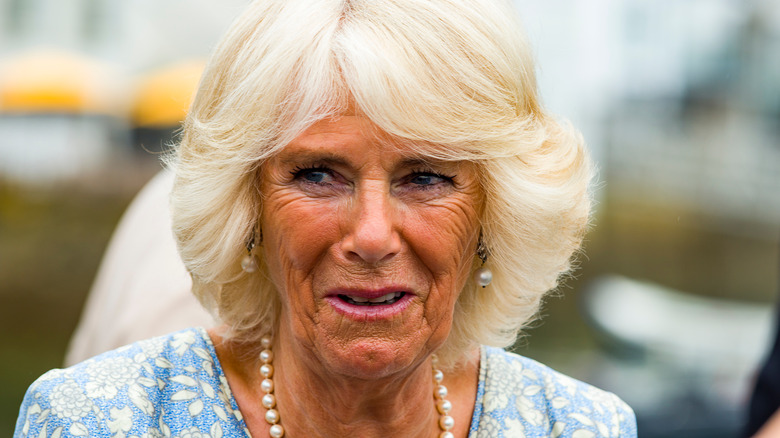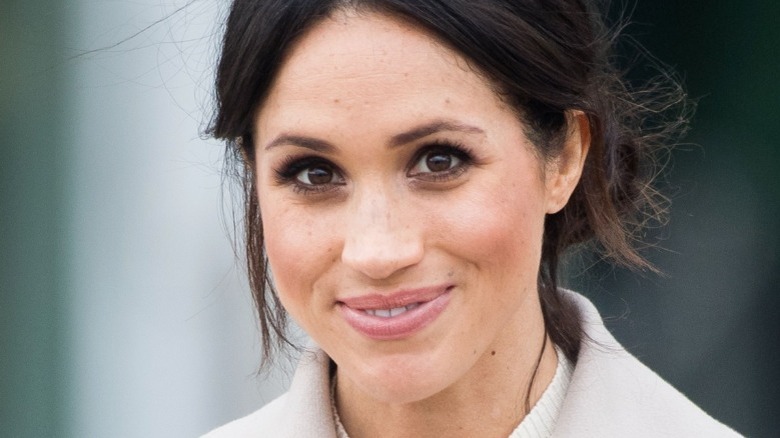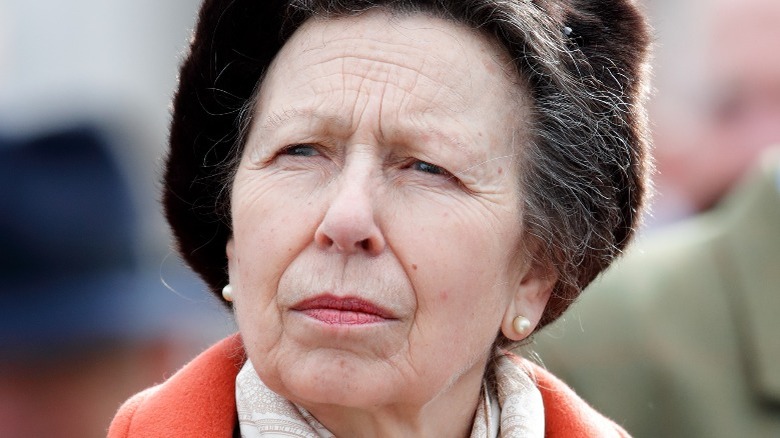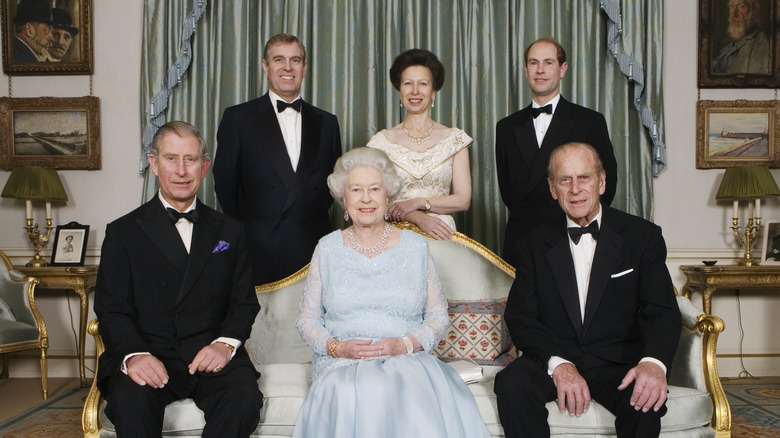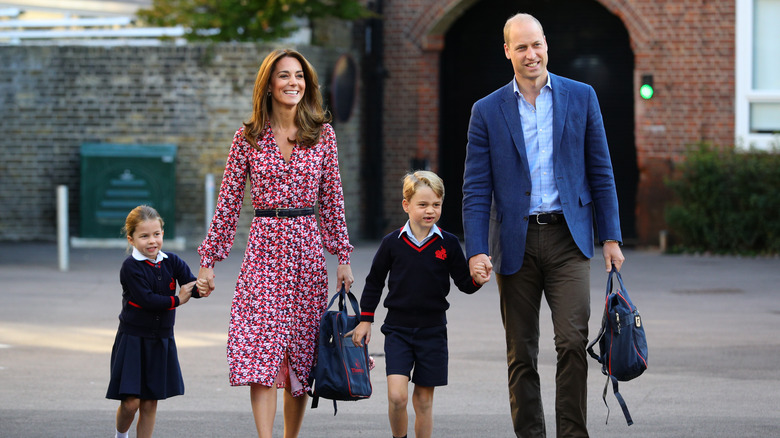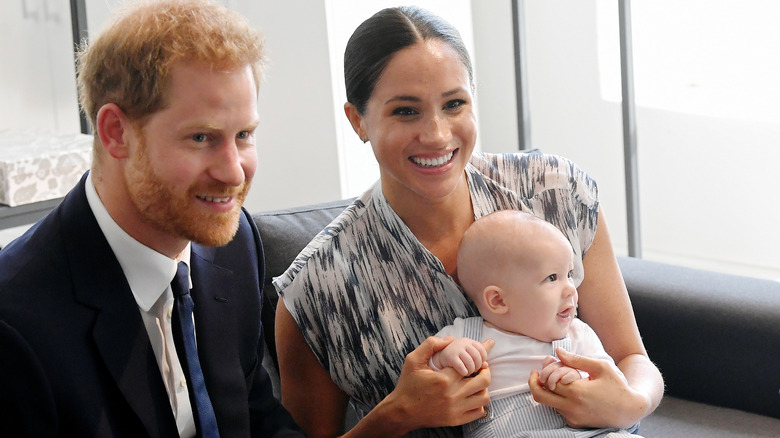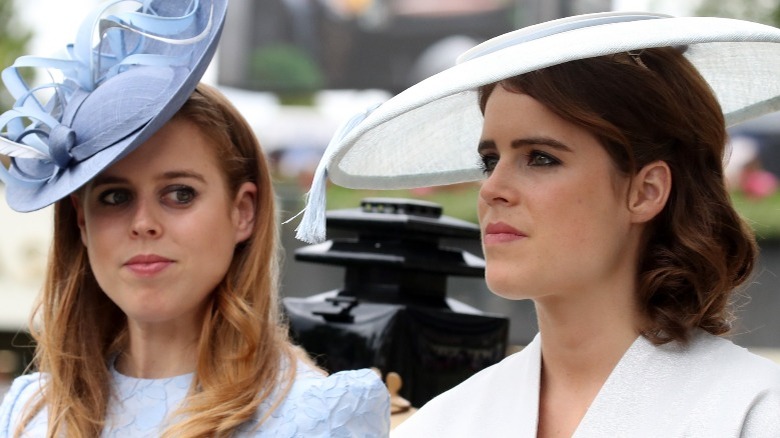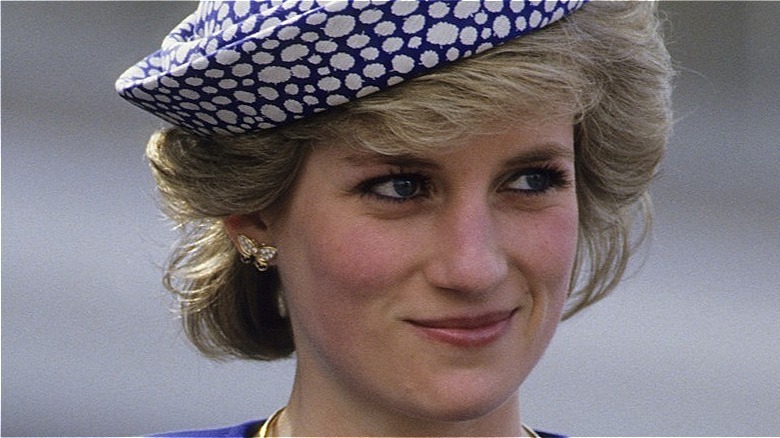How Royal Family Members Really Get Their Titles
Prince and princess, king and queen — these words conjure up images of fairy tales and fantasy books, but the reality of how members of the British royal family get their titles is rooted in historical texts and strict rules, with a dash of favoritism thrown in. Which doesn't mean that it's a dry or dull topic — quite the contrary! Combine grand-sounding matters, such as the Great Seal of the Realm, with the whims of ruling monarchs –- not to mention a couple scandals — and you've got yourself some juicy drama.
But who exactly counts as a member of the British royal family? Surprisingly, there is no set definition. The royal family's official website lists the queen, her children and their spouses, Prince William and Prince Harry and their spouses, and a handful of cousins. Most people would count little Prince George and his siblings as well.
The royal family is in constant flux, and as it changes, so do people's titles. Deaths and marriages play a part — but tradition only gets a person so far: A lot comes down to the queen's wishes because, well, she's the boss of them all. So why is Kate a duchess but not a princess, and just what was Diana's proper title? Let's break down how royal family members really get their titles.
Only these people can be called His or Her Royal Highness
The initials HRH before a royal family member's name stand for His or Her Royal Highness — the crème de la crème as far as royal titles go. Those who can use HRH are a rare few.
Modern history of the title dates back to King George V. As Royal Central explained, up until 1917, HRH was thrown around a bit willy-nilly, with all sorts of distant royal relatives using it. This became a problem when Britain went to war against Germany in World War I. George V had German relatives, and allowing them to use a British royal term was not exactly a good look. So in 1917, he issued the Letters Patent, declaring that HRH would be limited to "all children of the sovereign, all male-line grandchildren of the sovereign (children born to sons of the Monarch) and the son of the son of the Prince Of Wales," and that's pretty much how things stand. As well, any woman who marries an HRH gets to assume the female version of the title.
A lot had to happen for Queen Elizabeth to be the monarch
Understanding the royal family tree can be as confusing as trying to do your own taxes. In theory, it should be straightforward: As History.com explained, according to the rules of succession, when the ruling monarch dies, his or her eldest child takes over (while parliament oversees the change). But things rarely go as planned, do they? In order for Elizabeth Alexandra Mary Windsor to become queen, several untimely deaths and one shocking event had to take place.
The improbable story, as recounted by the BBC, started when Victoria ended up being queen in 1837, despite being fifth in line to the throne, after countless heirless uncles died. Fast-forward to 1936, and George V, her grandson, passes away. His eldest, Edward VIII, took over — but he was in love with Wallis Simpson, a divorced American he wished to wed. As Mental Floss explained, this was an issue because, as king, Edward was also the head of the Church of England, which opposed marriage after divorce: His choice was love or duty. In a major scandal, he chose Simpson, abdicating the throne after less than a year. It went to his brother, George VI, and, ultimately, George's daughter Princess Elizabeth since he did not have a son.
The Prince of Wales title has a controversial past
While stories of William Wallace (aka Braveheart), Rob Roy, and Scotland's battles against English takeover have been immortalized by Hollywood, far less attention has been paid to the bloody history of Wales. Which is a shame, because it's equally thrilling. For centuries, Wales was a series of kingdoms ruled by native princes. The English had tried taking it over with no luck — until the 1200s, when Edward I gained control of the population by building a series of formidable castles known as the Iron Ring and winning several major battles (via CADW). Understandably, the Welsh weren't thrilled with being subjects of an English king. As British Heritage Travel explained, to appease them, legend says Edward promised that the next prince would be born in Wales. Shortly thereafter, his wife conveniently gave birth to a boy at Caernarfon Castle. Technically, Edward had kept his word.
Since then, the title of Prince of Wales has traditionally gone to the male heir to the throne, but it is not bestowed automatically upon birth. The queen gave Prince Charles the title in 1958, and his official investiture took place in 1969 at, you guessed it, Caernarvon Castle, as noted by History Extra.
Most of Prince William's titles were gifts from the queen
Prince William is how most of us refer to William Arthur Philip Louis Mountbatten-Windsor, also known as the Duke of Cambridge.
But the second in line to the throne actually holds several titles, as is the case with most of the senior royals (via the Express). So what else could you call him? For starters, it depends on where you are, as many are specific to a region. In Northern Ireland, he is known as Baron of Carrickfergus; in Scotland, he's the Earl of Strathearn. He's also the Lord High Commissioner to the General Assembly of the Church of Scotland, but that one is a bit of a mouthful. Ditto Knight of the Most Ancient and Most Noble Order of the Thistle and Royal Knight Companion of the Most Noble Order of the Garter. That last one has a fun history: The Order of the Garter was established by King Edward III, who wanted his own version of King Arthur's Knights of the Round Table, as noted by Windsor Castle's College of St. George.
Most of Prince William's titles are gifts from the queen, and the same holds true for all members of the royal family (via Mental Floss). Sure beats another pair of socks as a present.
Prince Harry will always be a prince
Same as his older brother, Prince William, Prince Harry was automatically born a prince, according to the aforementioned Letters Patent (essentially an open letter to the public written by the monarch, made official by the Great Seal of the Realm). And despite all of his recent drama with the rest of the royal family, he'll likely die a prince, too. The title is considered part of his royal birthright, even if he doesn't want to use it.
Indeed, it seems he was happy to leave the moniker behind in England once he moved to California. Alexi Robichaux, chief executive at BetterUp (the life coaching firm where the prince is chief impact officer), told the BBC that his new employee prefers to be known simply as Harry (via Hello!).
When Harry and his wife, Meghan Markle, announced they would no longer be working members of the royal family, he was stripped of his honorary military ranks, however. This move is rumored to have bothered him the most. As Omid Scobie and Carolyn Durand wrote in "Finding Freedom" (via Town & Country): "The most demoralising aspect of the deal was Harry being stripped of his honorary military appointments." A source told the authors, "That's been a tough pill to swallow ..."
Kate Middleton's Duchess of Cambridge title was a wedding gift
When the queen gave Prince William the title Duke of Cambridge as a wedding present, his commoner bride, Kate Middleton, gained the title Duchess of Cambridge by extension. A few years later, in honor of the couple's eight-year wedding anniversary, the queen gave Kate her own special title: Dame Grand Cross of the Royal Victoria Order, which is "awarded to those who have served The Queen or the monarchy in a particular way," as the royal family's website notes. In this case, according to Hello! magazine, it was to recognize the close bond the two royal ladies share.
Technically, Kate could have refused the duchess title. "The duchess is also at liberty to make a formal request of the Queen to be known by another style," British constitutional expert Iain MacMarthanne told the Express.
More title changes are most likely in the works for Kate, including presumably becoming Princess of Wales when Prince Charles ascends to the throne, and then queen consort when Prince William becomes king, as per Town & Country.
Will Camilla Parker Bowles become queen?
Camilla Parker Bowles turned down a royal title upon her marriage to Prince Charles in 2005. She technically could have styled herself as Camilla, Princess of Wales, but according to Robert Jobson in his book "Charles at Seventy: Thoughts, Hopes and Dreams," chose not to because it was "insensitive" to the late Diana Spencer, Charles' first wife, who had used that title (via Reader's Digest). Fortunately, the queen made Charles the Duke of Cornwall, thereby allowing Camilla to use the duchess title.
The memory of Diana may also play a role in what Camilla's title will be when Charles becomes king. On their wedding day, the couple issued a statement saying, Camilla "should use the title HRH The Princess Consort," instead of queen consort. This move was determined by many, including The Times, to be a way of avoiding further ill will from a British public still mourning the loss of Diana in 1997.
But some are questioning whether this is still the plan, after this information was removed from Prince Charles' website. We'll just have to wait and see.
Was Meghan Markle stripped of her HRH title?
When Prince Harry and Meghan Markle made the decision to step away from royal duties, it was a real shock. No one had done such a thing since Edward VIII abdicated. Questions about how exactly it would play out swirled for months.
Everything was answered in 2020, when it was decided the couple would no longer be considered working royals, as noted by the BBC. As a result of the deal with the royal family, the couple lost their patronages, paid back the money for their Frogmore Cottage renovations, and gave up security privileges (via Vanity Fair). They were, however, allowed to remain as the Duke and Duchess of Sussex, according to The Guardian.
But contrary to popular belief, neither Harry nor Meghan were stripped of the HRH title. In reality, Meghan and Harry agreed not to use His or Her Royal Majesty, and they have stuck to that — except for one notable exception. On daughter Lilibet's birth certificate, her mother is listed as Rachel Meghan Markle, but her father is Duke of Sussex, His Royal Highness. Did Harry go back on his word? Not at all. He was obligated to use it since HRH is still legally his name, according to Insider.
Princess Anne's proper title is one of the rarest
As Queen Elizabeth's only daughter, Princess Anne has a special place in the royal family — and she has a title to match. Since 1987, she had been the Princess Royal, making her only the seventh person to ever hold the title (via Hello!). The title is strictly for the eldest daughter of a reigning monarch. Whoever holds the title keeps it until she passes, which means that if Anne is still alive when Prince William becomes king, Princess Charlotte will have to wait awhile for this particular hand-me-down.
While the rare Princess Royal title is obviously an exception, in general, Anne doesn't seem to care too much about titles. The queen offered to bestow titles upon Anne's children, but her daughter declined. It was the same with Anne's now ex-husband, Captain Mark Phillips, who, according to the Express, chose not to become an earl upon their marriage.
Who will be the next Duke of Edinburgh?
When the queen's husband, Prince Philip, died in 2021, he didn't just leave a tremendous hole in the royal family: He left a prestigious title up for grabs. As Royal Central shared, the Duke of Edinburgh title was created in 1726, and Philip was only the sixth person to hold it.
According to the Letters Patent, revised in 1947, the next to inherit it would be Prince Charles as the eldest son of the monarch. But as The Yorkshire Post reported, it was agreed long ago that when Charles becomes king, it would "merge with the crown," meaning it will dissolve and can be granted to someone else. Who will it go to? Prince Edward, the queen's youngest son, also known as the Earl of Wessex. It is said to be a reward to his years of work on the Duke of Edinburgh's International Award. Edward will have to wait a bit though, as he can only inherit the title after the queen dies.
The queen changed the rules for the Cambridge kids
Before the 2013 birth of Prince George, the eldest son of Kate Middleton and Prince William, the queen made a significant change to the Letters Patent (yes, those again), to make sure that the new heir to the throne would be born with a major royal title (via the BBC). Apparently no one knew the baby's gender ahead of time, as Kate and William stuck to the royal tradition of not finding out, according to CheatSheet. Which meant that if the infant had been a girl, the third in line to the throne could simply have been a lady.
The queen's change affected more than the firstborn: It declared that all Prince William's children would receive the titles of HRH, as well as prince or princess, which is why we also have Princess Charlotte and Prince Louis. And in a bid to move past some long-standing sexism, the queen made a second change in 2013, as reported by the BBC, abolishing the rule that should a girl be born first, a younger brother would take her place in the line of succession.
Why Archie and Lilibet may get titles in the future
As she made clear during her interview with Oprah Winfrey, Meghan Markle was upset that her son, Archie, was not deemed a prince when he was born. "They didn't want him to be a prince ... which would be different from protocol," the Duchess of Sussex said (via Vanity Fair). Her upset wasn't caused by mere vanity, but out of concern. No princely title meant her son would not be entitled to security paid for by the royals.
But, according to those Letters Patent, Archie could still become a prince when Charles takes the throne — and even gain His Royal Highness status. That's because Archie would then be a grandchild of a monarch and the son of a father born into the direct male line. The same would also hold true for Lilibet, who would become a princess and be entitled to HRH. Robert Lacey, author of "Battle of Brothers: William, Harry and the Inside Story of a Family in Tumult," told People he expects Prince Charles will follow tradition.
This is why Princess Beatrice has a title that Princess Eugenie doesn't
Sisters Beatrice and Eugenie, the only children of Prince Andrew and Sarah Ferguson, were born princesses with enormous privilege. Since then, their lives have followed similar paths: Both women have held full-time jobs, were married within a couple of years of each other, and seem eager to start families of their own (via Harper's Bazaar).
But who they married means that Princess Beatrice has a title that her sister, Princess Eugenie, does not have and likely never will. Eugenie married Jack Brooksbank, who is the European brand manager for a tequila company (via Town & Country). Beatrice, on the other hand, married a member of the Italian aristocracy. Her husband, Edoardo Mapelli Mozzi, is an Italian count, as noted by Vanity Fair. This means that Beatrice is now a princess and a countess — in Italy, at least. The additional title holds no real meaning in England.
Everyone makes this mistake about Diana's title
Lady Di, Princess Diana, the People's Princess — only one of these is a real title held by Diana, the beloved late wife of Prince Charles.
The easy-to-spot fake is the People's Princess, a nickname that was embedded into pop culture. British prime minister Tony Blair used it in a speech after her death (via the BBC). "She was the People's Princess and that is how she will stay, how she will remain in our hearts and our memories for ever," he said. And Diana Spencer was, in fact, a lady before she married into the royal family. She became one in 1975, when her father inherited an earldom, as the royal family website explained.
Which means that, no, Diana was never Princess Diana (though most of us refer to her as that) — even though she was Diana, Princess of Wales, as the Express explained. It's a subtle difference, but a key one. Only direct blood relatives of the queen can put "princess" before their name. Even marrying a prince doesn't give you that right. But, since her husband was the Prince of Wales, she was entitled to the female version of that specific title. Hey, the royal family can be real sticklers for rules — especially when it comes to how they get their titles.
